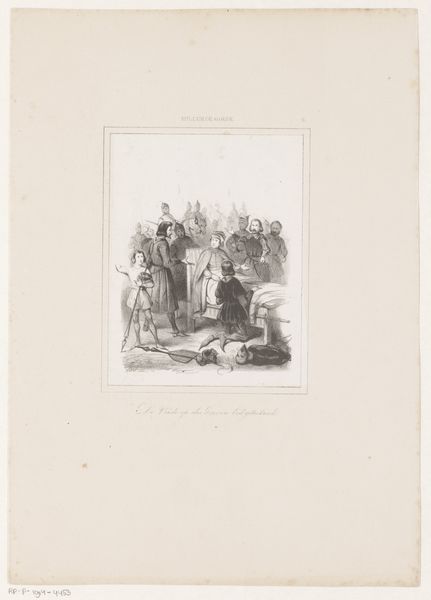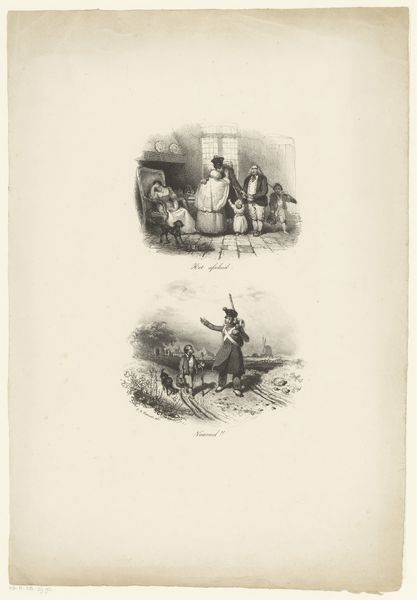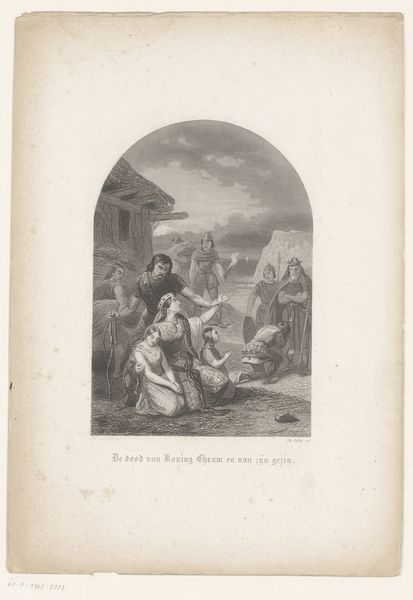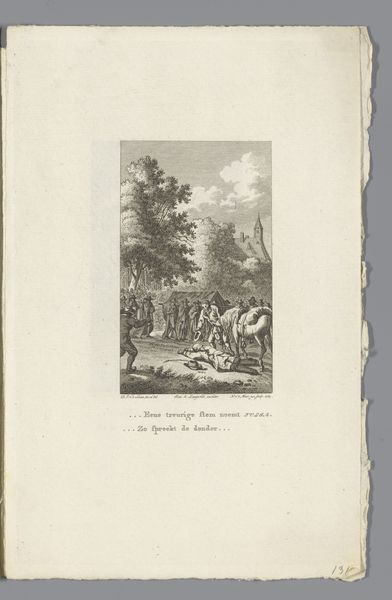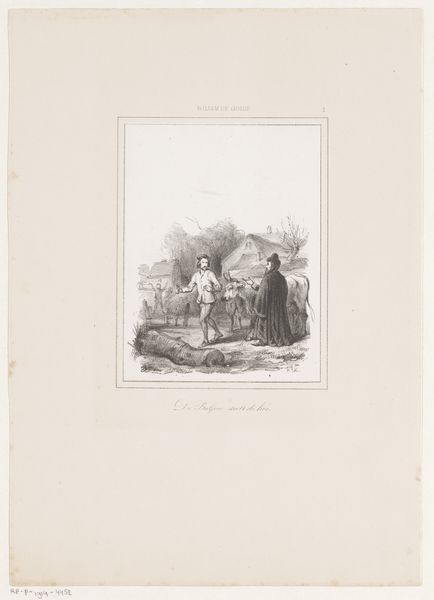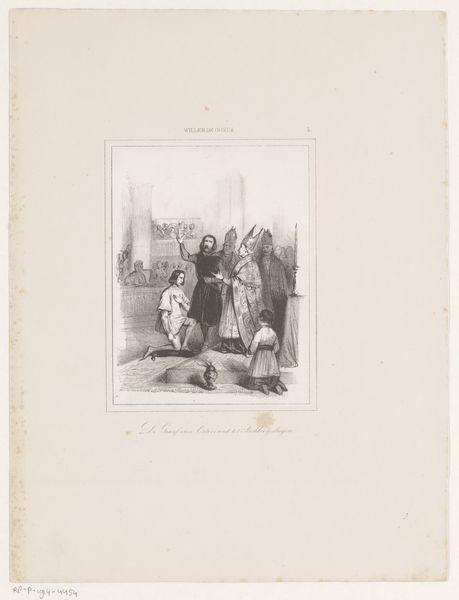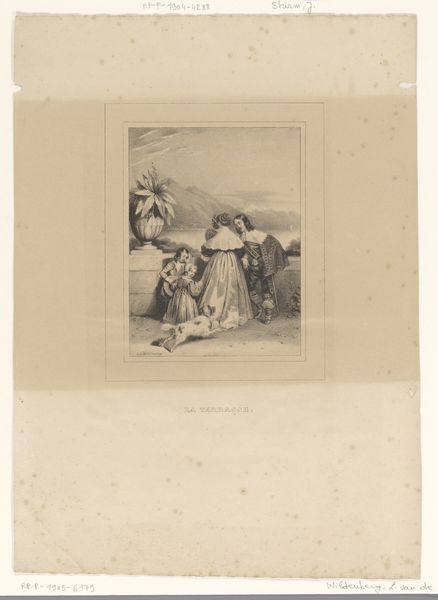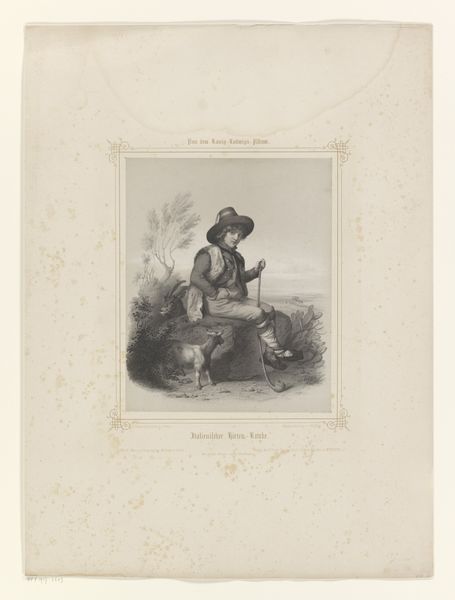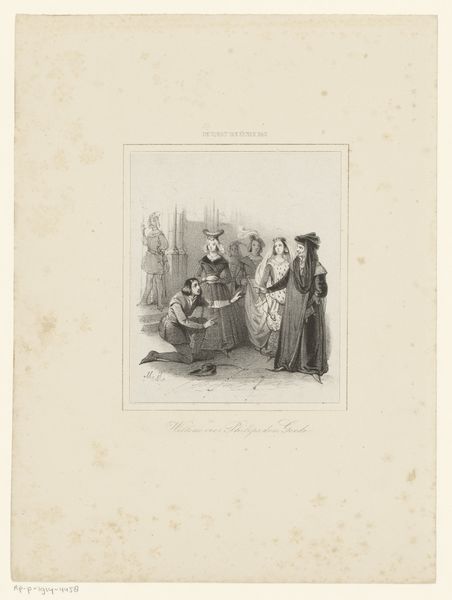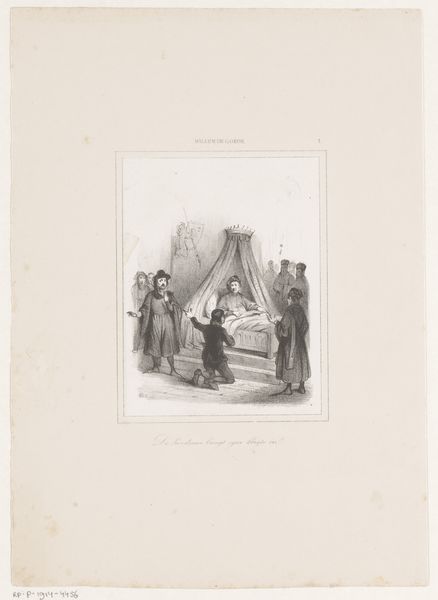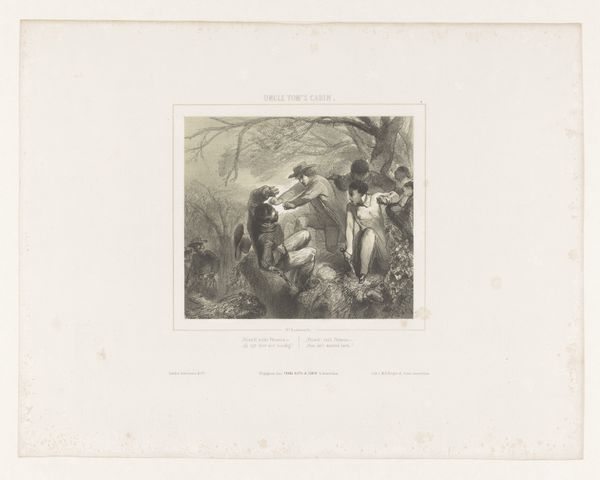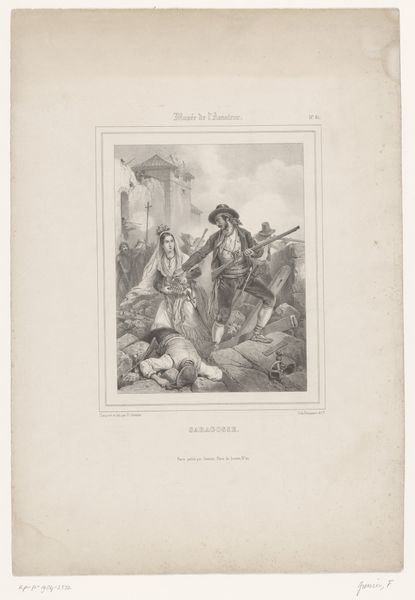
print, paper, engraving
# print
#
figuration
#
paper
#
romanticism
#
line
#
history-painting
#
engraving
#
monochrome
Dimensions: height 158 mm, width 123 mm
Copyright: Rijks Museum: Open Domain
Editor: We're looking at "Bewening van een geketende vrouw," or "Lamentation of a Chained Woman," an engraving made around 1829 by Jean Jacques Frilley, currently held at the Rijksmuseum. It's a very stark, monochrome print on paper. The somber mood really stands out; the bowed heads and slumped postures create a feeling of overwhelming grief. What draws your eye in this piece? Curator: My attention is drawn to the artist's masterful use of line to delineate form and evoke emotion. Note the strategic deployment of hatching and cross-hatching; this dictates tonal variations which bring depth to the monochrome palette, thereby orchestrating light and shadow with considerable finesse. Observe how Frilley used line to guide your eye throughout the scene. How does the composition draw attention to the central figure? Editor: The way the other figures are arranged does frame the woman. Also, the details are sharpest there, compared to the blurry figures in the back, making the composition seem like it’s a pyramid focusing your sight to the front. I guess that's the classic Romanticism coming through. I had not focused on line alone so much before. It almost feels like an illusion. Curator: Exactly. Illusion is produced here through lines which are not, of course, objectively ‘there’, but appear through skilled use of contrasts, thereby defining edges which constitute human forms, emotions and implied meanings. Art in its purest state is indeed, in effect, illusion. But in order for an illusion to operate on the senses, there has to be inherent balance across all elements of construction: the formal devices must be mutually supportive. What's your opinion on Frilley’s control over depth of field? Editor: Thinking about it now, that depth brings a dynamism to the entire work. You've given me a whole new framework for assessing art. I now see formal construction as its own mode of expression. Curator: Precisely. The intrinsic elements become a kind of meta-language!
Comments
No comments
Be the first to comment and join the conversation on the ultimate creative platform.
